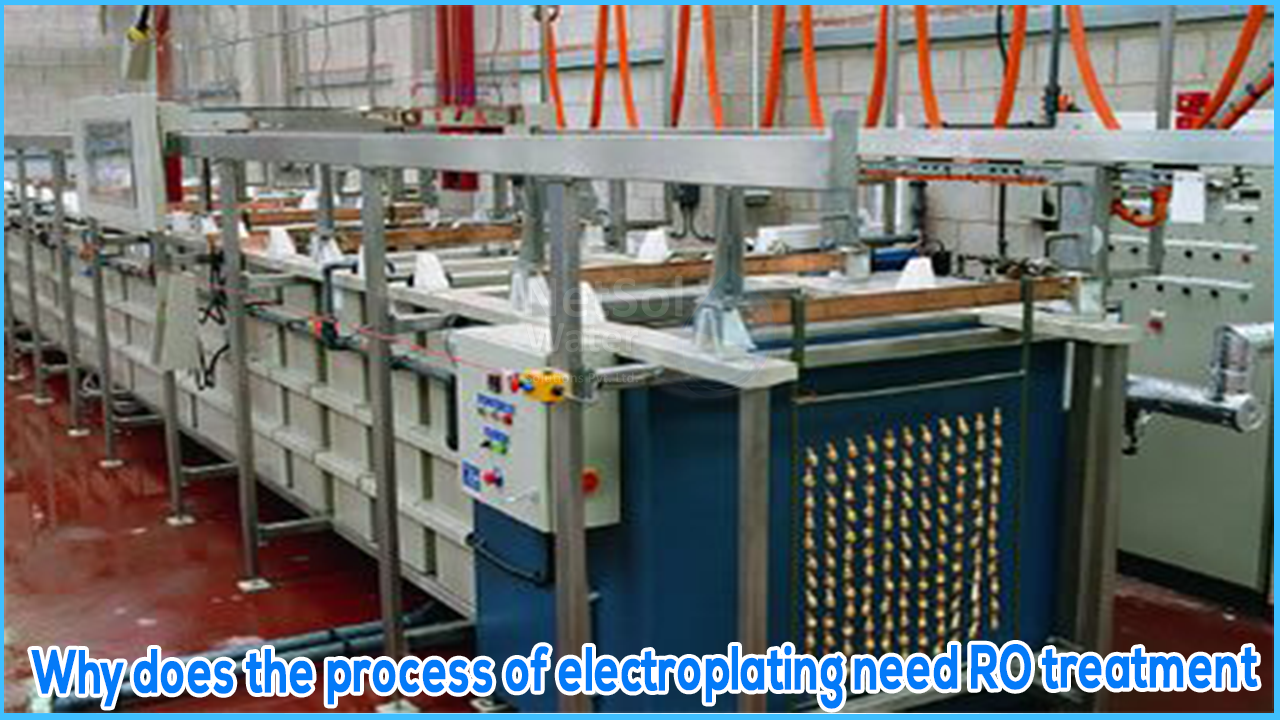Why does the process of electroplating need ro treatment
The process of separating water from a solution of dissolved solids by making it pass through a semi permeable membrane is known as Reverse Osmosis (Ro).When pressure is applied to the water, molecules (having low molecular weights) and entire solution pass through micro pores in the membrane whereas the larger molecules, such as organic dyes and metal complexes, are left behind on the membrane. The pure water that passes through the membrane is known as “Permeate” and the concentrated stream having a high concentration of dissolved solids is known as “Concentrate”. The membrane system in has cross-flow filtration to allow the concentrate to take away retained molecules and prevent the surface clogging.Earlier, RO applications for electroplating operations were mostly limited to final treatment of a combined wastewater jet. This involved discharging the permeate to a POTW and taking back the concentrate to the head of the wastewater treatment system. The high flow rates associated with treating combined wastewater jets, needed costly RO but now recent metal finishing applications of RO have involved installing RO units in specific process operations, which allows the return of the concentrate to the process bath and reuse of the permeate i.e. the cleaned rinse water as fresh rinse water. At the end chemicals are recovered, and less fresh water is needed. Also, a waste jet is eradicated that would otherwise be discharged to the POTW.
RO systems have been best for, variety of metal finishing operations that includes several types of copper, nickel, and zinc electroplating, nickel acetate seal, and black dye.
What is Electroplating?
The process that uses chemical/electrochemical method to make a coherent metallic coating layer on the surface of base materials is known as Electroplating. Large numbers of additives that can form relatively strong complexes with heavy metals are used to improve the quality of plating pieces. The additives used are tartaric acid, ethylene diamine, tetra-acetic acid, pyrophosphate, citric acid, ammonia, etc. As a result, a lot of polluters that are toxic or even carcinogenic will be present in electroplating wastewater. In addition, the amount of valuable metals cannot be ignored.One of the membrane-based methods for electroplating wastewater treatment is Reverse Osmosis.
Undoubtedly, RO water is the best solvent. Thus, for the purpose of rinsing metal work in electroplating, a good grade of RO water is needed. All this is done to eliminate tramp metals for fear that they build up in baths and swills. This may also affect the conductivity. Thus the process of reverse osmosis reduces conductivity. Poor conductivity has a great impact on covering power, throwing power and roughness which affects the plating quality in electroplating.
Thus, it cleans deeply metal work that is being prepared for treatment. At the end when the metal work has been cleaned deeply, RO water is then used as a final rinse and this washes away any excess solutions leaving a new, clear and free from streak final product.




